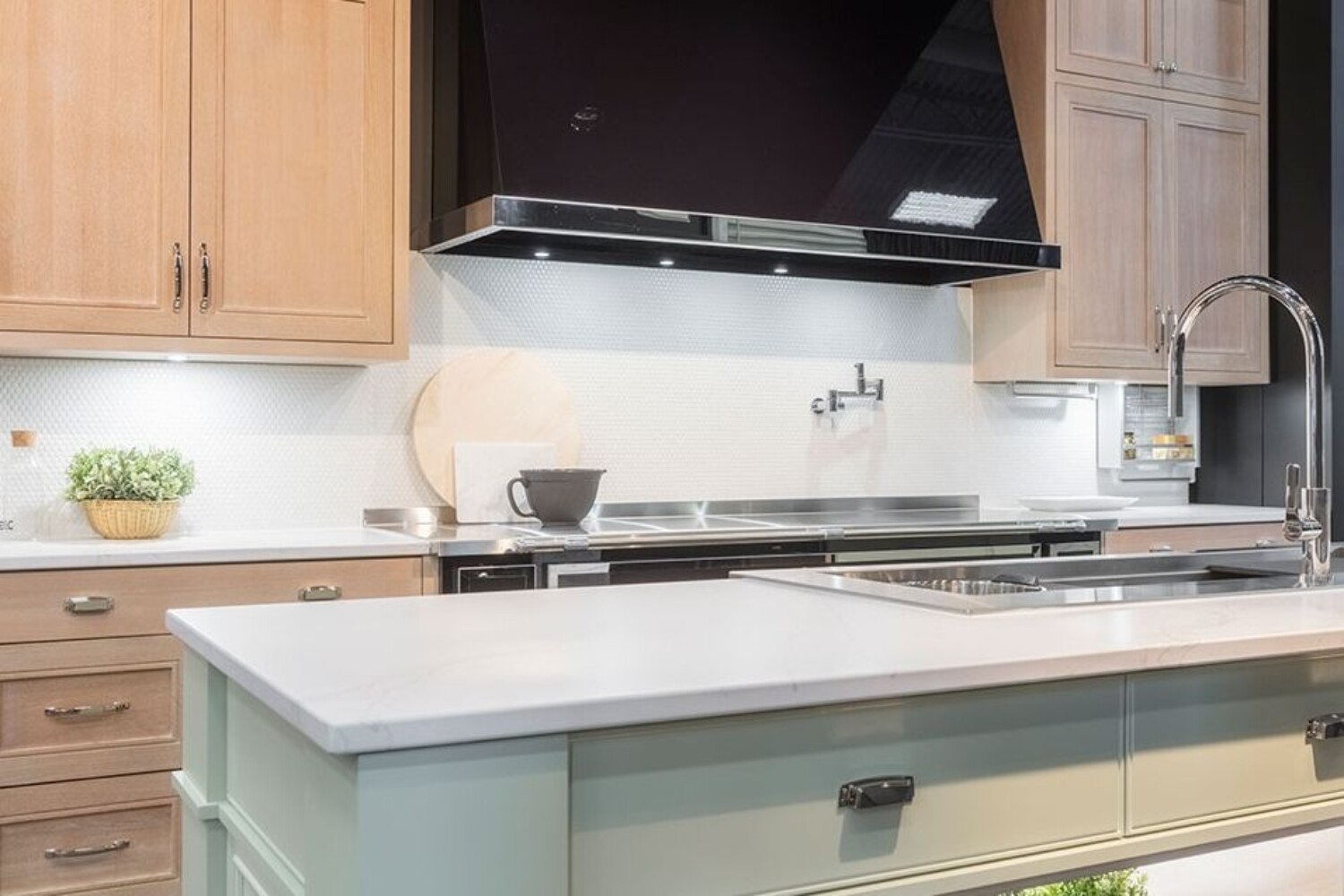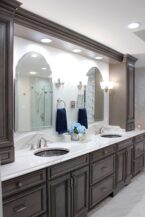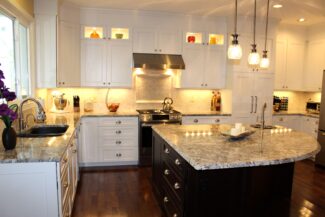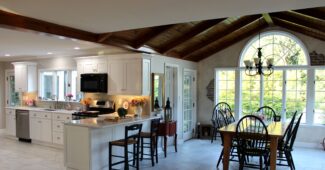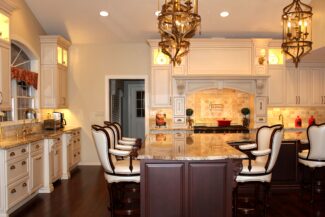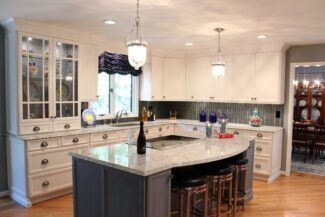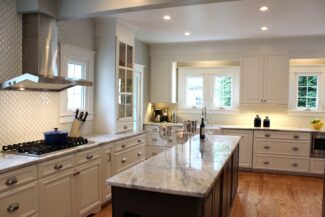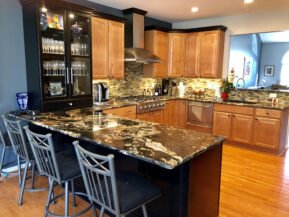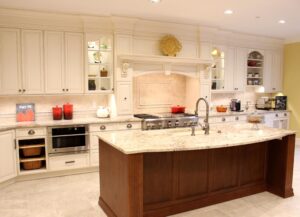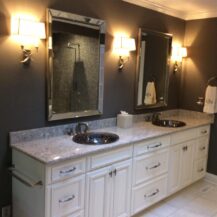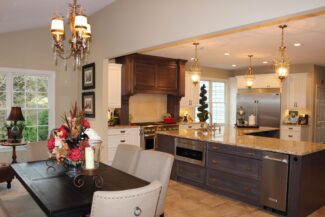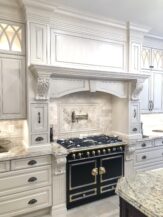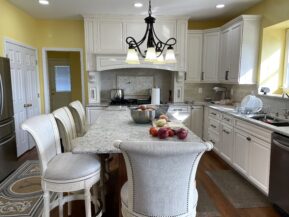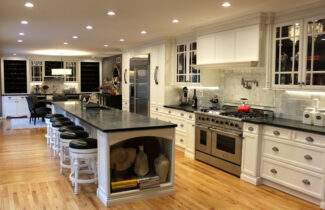INTRODUCING RED & WHITE OAK
This piece is the first in the Grandior Wood Species Series, where we’ll be discussing various natural wood species, how they’re often applied in cabinetry, and how you can use them to create inspired designs.
Style that stands the test of time? In more ways than one, oak remains the gold standard. This distinctive hardwood brings character that’s impossible to replicate. Even so, that same character requires careful examination as it can offer surprises every designer and homeowner should be aware of.
The Oak Experience
Oak is a popular, strong hardwood with a distinct grain, available in numerous species like red and white oak, each with different characteristics. It is widely used for durable products like furniture, flooring, and cabinetry, and is known for its strength and versatility. White oak is generally denser and more water-resistant, while red oak is slightly softer and can have a more pronounced pink or reddish hue.
Running your hand across pure oak reveals a time-honored story. Pronounced patterns reminiscent of church spires flow and jut across flat-sawn boards, while reverential flecks and rays catch light to give the species near three-dimensional depth. This tactile richness translates into visual drama that makes oak cabinetry a design focal point rather than simply functional storage.
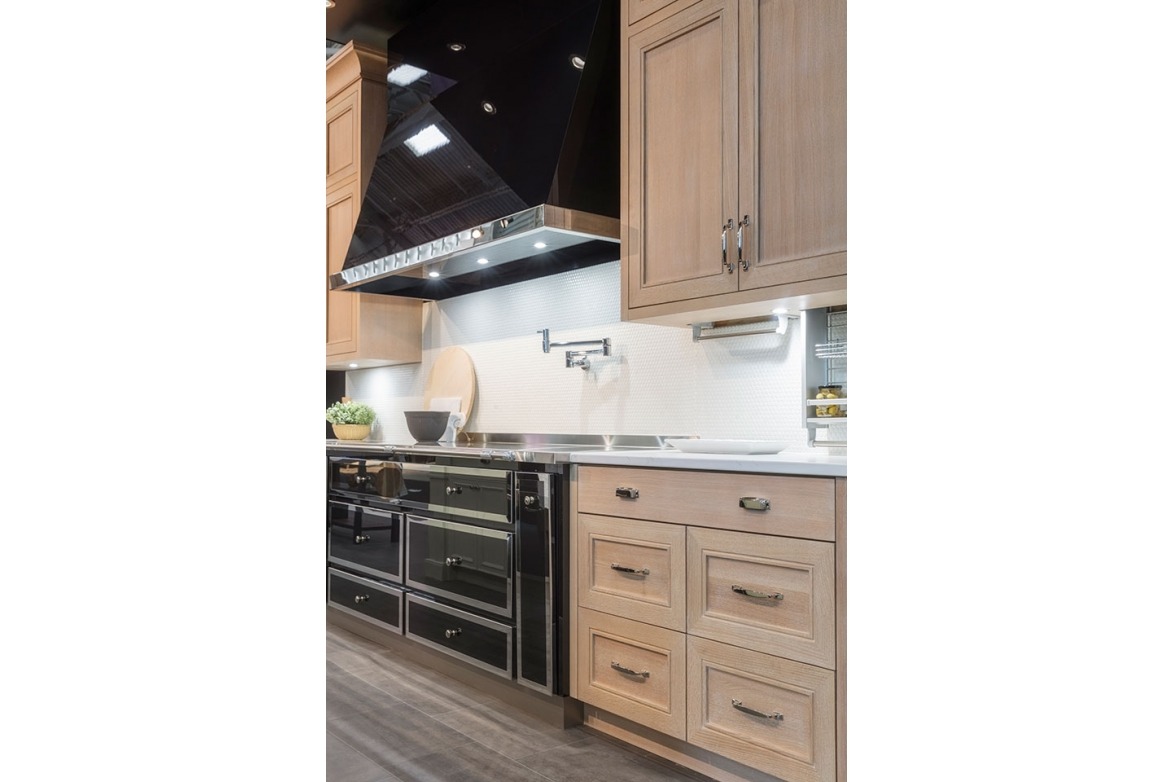
Key Characteristics Of Oak
Oak’s open grain structure and tannins create beauty and complexity, and the wood’s natural properties also allow it to readily accept stain. But that’s often where oak’s unique idiosyncrasies emerge. Those same tannins that grant oak its warm undertones can react unexpectedly with certain finishes, sometimes shifting colors in extraordinary ways.
This is precisely why many designers and manufacturers go the extra mile to set consumer expectations when working with oak – not because there’s any material issue with the wood, but because its chemistry creates variables that other woods and synthetics don’t possess.
-
Strength and durability:
Oak is a heavy, hard, and durable wood, making it ideal for high-traffic areas like flooring and heavy-use items like furniture.
-
Grain:
It has a long, straight, and strong grain pattern that can vary in appearance depending on the cut.
-
Color:
Colors range from light to dark brown, with red oak often having a more reddish or pinkish undertone and white oak being more grayish-tan to light brown.
-
Tannins:
Oak contains tannins that give it a warm undertone but can also react with certain finishes, sometimes causing unexpected color shifts.
-
Versatility:
Oak readily accepts stains and can be customized with various finishes to achieve different looks.
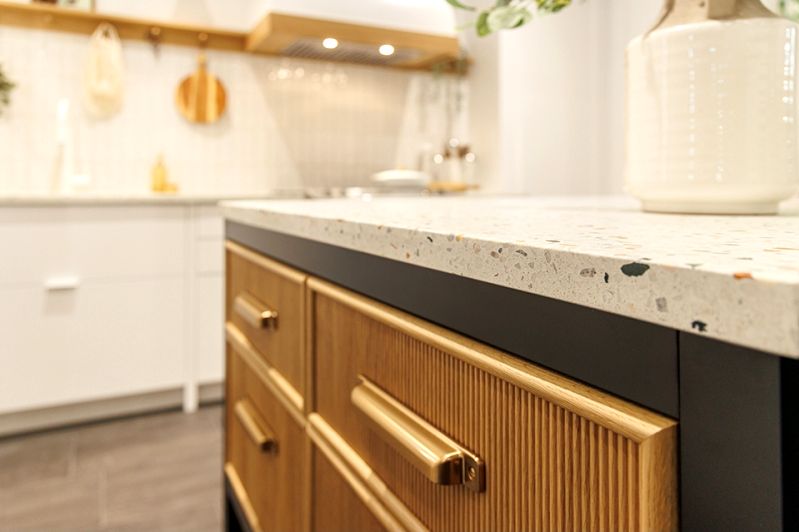
Major types of oak
-
Red Oak:
- Characteristics: Features a more prominent reddish or pinkish tone, though it can be lightened with stain. It is slightly less dense than white oak.
- Uses: Popular for cabinetry, paneling, and furniture.
- Characteristics: Features a more prominent reddish or pinkish tone, though it can be lightened with stain. It is slightly less dense than white oak.
-
White Oak:
- Characteristics: Typically has a more neutral, grayish-tan to light brown color. It is very dense, strong, and more water-resistant than red oak.
- Uses: Historically used for shipbuilding due to its durability. Today, it is used for furniture, flooring, and is especially known for making wine and whiskey barrels.
- Characteristics: Typically has a more neutral, grayish-tan to light brown color. It is very dense, strong, and more water-resistant than red oak.
-
Quarter Sawn White Oak:
- Characteristics: A specific cut of white oak that results in a distinctive, intricate “ray fleck” or “medullary ray” pattern, making it popular for both traditional and modern designs.
Considerations for working with oak
-
Finishing:
The tannins in oak can cause unique color variations, so it is important to set expectations or test finishes before applying.
-
Hardness:
Its hardness can make it challenging to distress, so an alternative wood species like cherry or brown maple might be better for projects where distressing is desired.
-
Cost:
Oak is often a good value for a hardwood, particularly for furniture.
-
Grading:The grade of the oak, such as “rustic” or “select,” will significantly impact the final appearance, with rustic grades showcasing more natural character marks like knots.
Grade Makes the Difference
Moreover, understanding oak grades is crucial for managing both appearance and cost. Rustic grades embrace oak’s natural personality—knots, mineral streaks, and color variations that tell the tree’s complete story. Side by side you’ll notice select grades like Rift-Sawn White Oak, offer consistent color with minimal character marks, better suited for contemporary designs seeking uniformity.
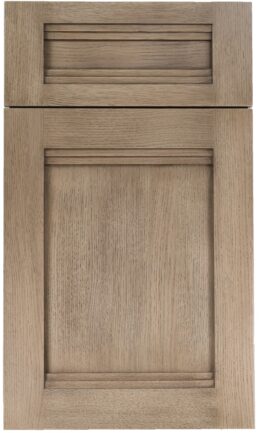
WRIGHT DOOR STYLE
Wood: Rift-Sawn White Oak
Stain/Glaze: Whitewash w/ DVDB Glaze
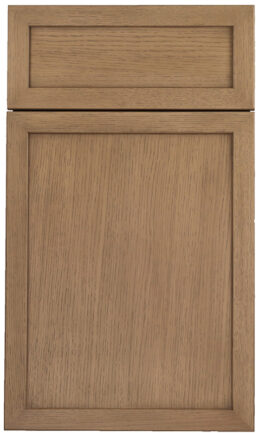
VERONA DOOR STYLE
Wood: Rift Sawn White Oak
Stain/Glaze: Arizona Desert
Similarly, most white oak products come at a significantly higher cost than red oak. That’s why Grandior created an alternative to achieve a premium look at an approachable price. Our craftsmen use a proprietary technique that chemically inhibits the inherent amber tones of red oak so it presents visually as popular white oak. When oak is part of the design, our rift-sawn red oak collection offers decided advantages in both style and cost.
WHEN YOU REQUIRE EXCELLENCE, YOUR CHOICE IS GRANDIOR!
SCHEDULE A CONSULTATION
DISCOVER HOW WE CAN BRING YOUR DREAMS TO REALITY.
WE LOOK FORWARD TO INTRODUCING YOU TO THE WORLD OF GRANDIOR IN PERSON.

